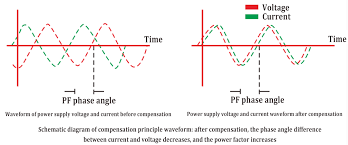Metering Knowledge, NEWS
What is reactive power compensation?
When reactive power devices, whether capacitive or inductive, are purposefully added to apower network in order to produce a specific outcome, this is referred to as compensation. it’sas simple as that. This could involve greater transmission capacity, enhanced stabilityperformance, and enhanced voltage profiles as well as improved power factor. The reactivedevices can be connected either in series or in parallel (shunt).
Before we get into the depth of describing the compensation applications and other details, let’sremind ourselves of the power flow basics.
As you can see from Figure 1, the flow of power in an electric circuit is ilustrated. The link hasan impedance of R+jX, and we assume that V,>V, and that V, leads V2. In most powernetworks, X>>R, and reactive power flows from A to B. The direction of reactive power flow canbe reversed by making V₂>V .
The magnitude of reactive power flow is determined by the voltage difference between point Aand B. When R is ignored, the reactive power flow, Q is given by the following formula:Q= V₂(V – Vz)/X
The ideal situation is when V,= V2, and reactive power flow is zero.
The maximum possible active power transfer Pmax is given by Pmax = V,V2 / X. lt is clearfrom the above formula that active power transfer capacity is improved if V, is increased

